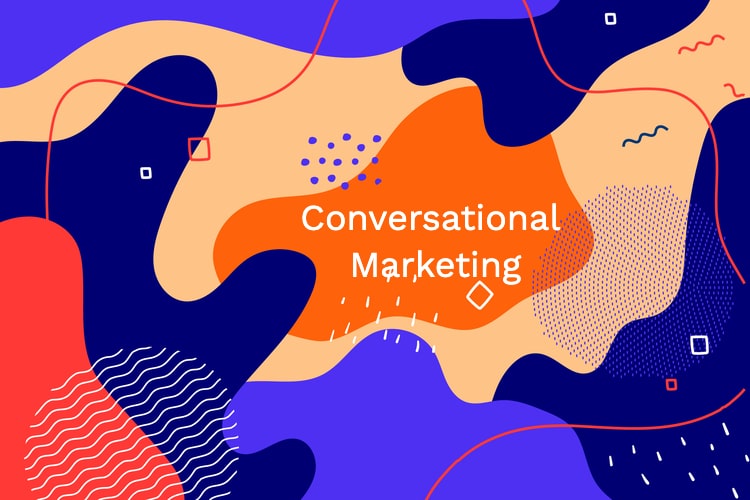Emojis have taken over the way we communicate. When words are not enough, we use broken hearts, smiley faces or a monkey covering its eyes to express our feelings. People have become so obsessed with these cute graphic icons that July 17 has become the World Emoji Day.
According to Swift Media, 74% of people in the U.S. regularly use app stickers or emojis in their online communication, sending an average of 96 emojis or stickers per day. To put this into perspective, there are 6 billion emoticons sent around the world every day.
Not only have emojis become a staple in online communication, but they’ve also been taking the world of content marketing by storm. As the use of emojis proliferates, bloggers, content writing services and marketers are using the tiny pictographs to join consumers’ everyday conversations and to connect with them.
So, why are we so obsessed with emoji? And should content writers and marketers incorporate them in their strategies?
In this post, I will discuss the psychology of emojis and how you can harness their power to make your content more engaging.
What Are Emojis?
Emojis and emoticons are not the same thing.
An emoticon is a typographic display of a facial representation used to convey emotion in a text-only medium.
The first documented use of an emoticon dates back to 1982 when computer scientist Scott Fahlman proposed that “:-)” and “: -(” be used by the Carnegie Mellon University to distinguish jokes from serious statements online. Within a few months, the emoticon had spread to the ARPANET and Usenet, and other variations of it were immediately suggested by Scott and others.
Emojis, on the other hand, are pictographs used in Japanese electronic messages and webpages. The name is a contraction of the words e (picture) and moji (character).
Emojis were created in late 1990 by NTT DoCoMo, a Japanese communication company. The designer, Shigetaka Kurita, took inspiration from weather forecasts that used symbols to show weather and from manga that used stock symbols to express emotions.
Unlike emoticons, emojis are actual pictures of everything from tulips to kissy faces. Not all browsers or email services can support emojis.
To complicate matters, some people use “kaomoji” instead of emoticons or emojis. Kaomoji uses Japanese characters and grammar punctuations to express emotions in texting and online communication. They may be as simple as “(>_<)” or as complex as “ヘ(*^0^*)ノ”.
And, let’s not forget about stickers, the custom pictures used by Internet-based messaging apps, such as Facebook Messenger or WhatsApp.
The Rise of Emojis in Content Marketing
Emojis have been around for a while, but they became a craze for the western culture in 2011 when Apple incorporated them into iOS 5.
Nowadays, the volume of emojis is increasing at a rapid pace. The Unicode Consortium – the group that oversees Unicode standards – is presently adding up to 100 new emojis per year. A poll conducted by AYTM Market Research found that 58% of consumers currently use five or fewer emojis on a regular basis. Furthermore, even the White House incorporated them in an infographic as part of a report on the impact of millennials. Google also introduced an extended collection of emojis for Gmail, giving users more ways to communicate and express their emotions.
So, it should be no surprise that brands are trying to incorporate them into their marketing efforts.
Emojis allow brands to connect with consumers without interrupting them in their daily lives. In addition, they help brands humanize themselves by adding an emotional layer to their marketing efforts.
Many brands managed to incorporate the language of emojis into their campaigns with success. For example, Burger King promoted the return of its Chicken Fries with emoji-based content on Twitter. Dominos’ created a service that allows consumers to order pizza by texting a pizza emoji. World Wide Fund for Nature used the panda face emoji to raise awareness about endangered species and to encourage consumers who regularly use emojis of pandas to donate to its conservation efforts.
The Psychology of Emojis: Why Do We Love Them so Much?
Emojis transcend languages and cultural barriers. They are easily recognized. A smiley face conveys the same message whether you are from Sweden or from India. In addition, an emoji can add personality to a text-based conversation.
But, aside from spicing up our conversations, why are we so obsessed with emojis? What is it about these tiny ideograms that make us love them so much?
We React to Them Like We Would to a Real Human Face
In a study conducted by Dr. Owen Churches, of the school of psychology at Finders University in Australia, it was found that people react to emoticons the same way they would react to a real human face.
“Before 1982 there would be no reason that ‘: -)’ would activate face-sensitive areas of the cortex, but now it does because we’ve learned that this represents a face”, explains Churches. Emoticons have become “culturally-created neural responses.”
Churches believe that the same reaction could occur with emojis in the future. He argues that emojis are similar to faces, more so than emoticons, and thus more personal.
Why might this make a difference for content writing services? Because people pay more attention to faces than they do to anything else. Including emojis, particularly the ones with faces, in your content can help you connect with your audience in a more fun and natural way.
They Help Us Communicate Better
Numerous studies show that the majority of communication is transmitted non-verbally. 70% of communication is body language, 23% is voice tone and inflection, and only 7% is what you say. So, we use gestures, facial expressions, intonation, and body language to express ourselves. But, when we communicate online or via text message, we lack these elements and we are unable to read the body language of others or to hear the modulation of their voices. This can often lead to miscommunication or misinterpretation.
To test how emoticons help us communicate better, researches gave two groups of 12 people a task to solve together. The groups had to communicate via computers. But, here’s the twist – one group had the option to use emoticons, while the other did not.
The study found that when emoticons were available, people almost always chose to use them. The use of emoticons also made the participants enjoy the process.
Another study found that emoticons help reduce ambiguity and can amplify the message we’re trying to send. A happy emoticon makes a written message seem happier and vice versa.
Although these studies were conducted with emoticons, not emoji, we can hypothesize similar results. Millennials and generation X are using emojis to express their emotions.
For content writing services, emojis can be a great tool to make your message less ambiguous and to relate with your audience on an emotional level.
They Increase Social Intimacy
When speaking face-to-face, people mimic each other’s expressions and emotions. It is a mechanism that helps us connect and build intimacy. In online communication and text-based messages, social mimicry has been replaced by emojis and emoticons.
Studies show that when we see certain emoticons, our mood changes. We alter our facial expressions to match the emotion of the emoticon. Furthermore, researchers found that the more graphic the emoticon, the more our brain responds to it.
In other words, it is easier for our brain to recognize this “J” than this “: -)”, because it doesn’t have to fill in as many gaps in order to understand that the ideogram is a smiley face.
How to Incorporate Emojis in Your Content Strategy
Do emojis increase engagement? Can they be used to trigger emotions and boost conversions? And, most importantly, can content writing services incorporate emoji in their strategy? The answer is yes, as long as they are relevant to your message and your target audience.
In order to successfully incorporate emoji in their strategies, content writing services must follow some guidelines.
Know How Your Audience Speaks
A study by linguist Tyler Schnoebelen found that how people use emoji and what they use them to signify varies by age, gender, location, and even social class.
In order for content writing services to fit emojis into their communication, they must know how their target audience speaks to one another. Are they clever and chatty? Do they use slangs? Do they talk in a more formal, business-oriented matter?
Having a buyer persona can help you identify the essence of the language used by your audience.
Be Playful, But Relevant
An emoji can say more than a thousand words, but if it’s used in the wrong context, it can create confusion and ambiguity.
Always ask yourself, “Does this emoji make sense in this context?” Don’t use emojis for the sake of using them. Make sure you also offer some kind of value. Remember to stay relevant and stick to your message and target audience.
Make Sure They Fit Your Voice and Tone
Humans relate to humans, not logos. When they talk with a brand, they want to feel like there is a human being behind the logo. They want authentic communication.
Defining your voice and tone and sticking to it across all channels, can help build that sense of authenticity. If you want to incorporate emojis in your content strategy, make sure they fit into your existing voice and tone.
Emojis aren’t suited for all types of content, so if they don’t fit naturally, it’s probably better not to use them.
Use Them to Make Your Content More Visually Appealing
We humans are visual creatures. In fact, 90% of the information transmitted to the brain is visual. Moreover, our brains can process visual information 60.000 times faster than they can process text. This is the reason why infographics, memes, and video content are so successful.
So, how can content writing services incorporate emojis in their visual content?
For example, General Electric created an infographic of the Periodic Table of emojis. The brand used Snapchat to encourage people to send in an emoji. In exchange, the brand sent back a science experiment inspired by the emoji keyboard.
Even the White House used emojis to make its content more visually appealing. In an infographic about millennials, the White House used a number of emojis to make the content more relevant to the audience.
Use Them to Get More Social Shares
After analyzing more than 31 million tweets and half a million Facebook posts, Simo Tchokni of the University of Cambridge Computer Laboratory found a link between emoji use and social power. According to Tchokni, powerful users tend to use emoticons often. Furthermore, a high Klout – a website and mobile app that uses social media analytics to rank its users according to online social influence – is strongly associated with positive emoticons.
How Are You Using Emojis?
Incorporating emojis into your content strategy should be a decision based on your knowing your audience and your core message. Used correctly, they can make your content lively and can boost engagement.
Do you use emojis? Do you notice a difference in how your audience interacts with your content when you use them? I’d love to hear your thoughts.






